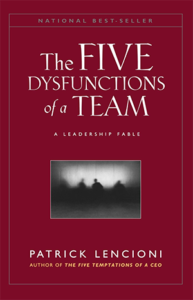|
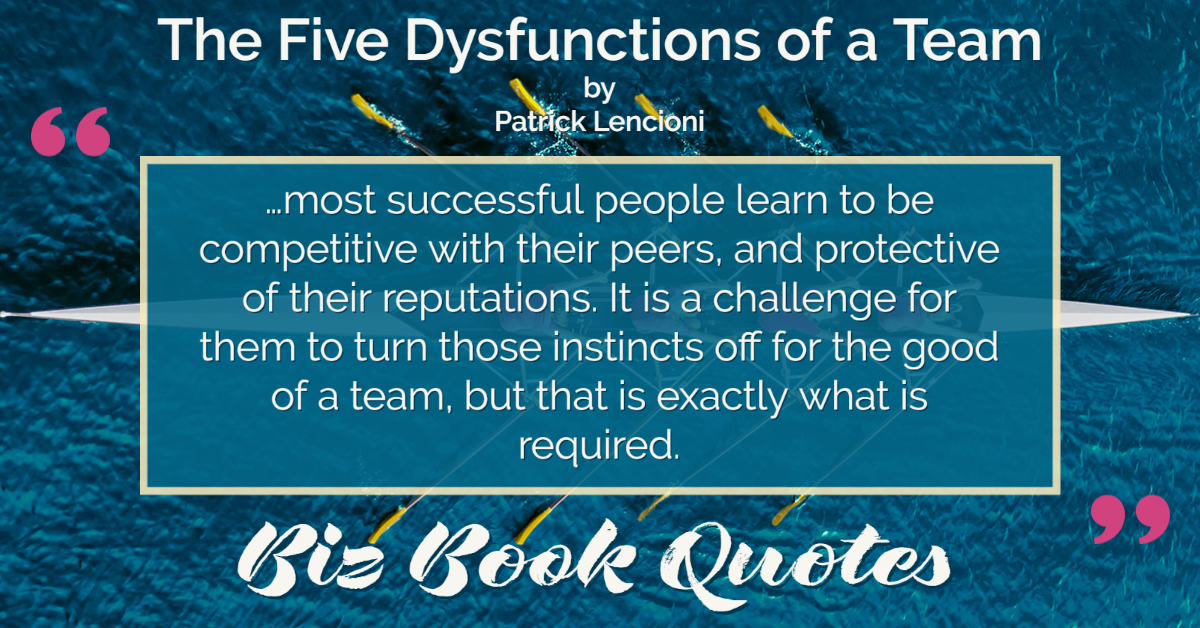
|
The Five Dysfunctions of a Team:
…most successful people learn to be competitive with their peers, and protective of their reputations. It is a challenge for them to turn those instincts off for the good of a team, but that is exactly what is required.
|
196 |
|
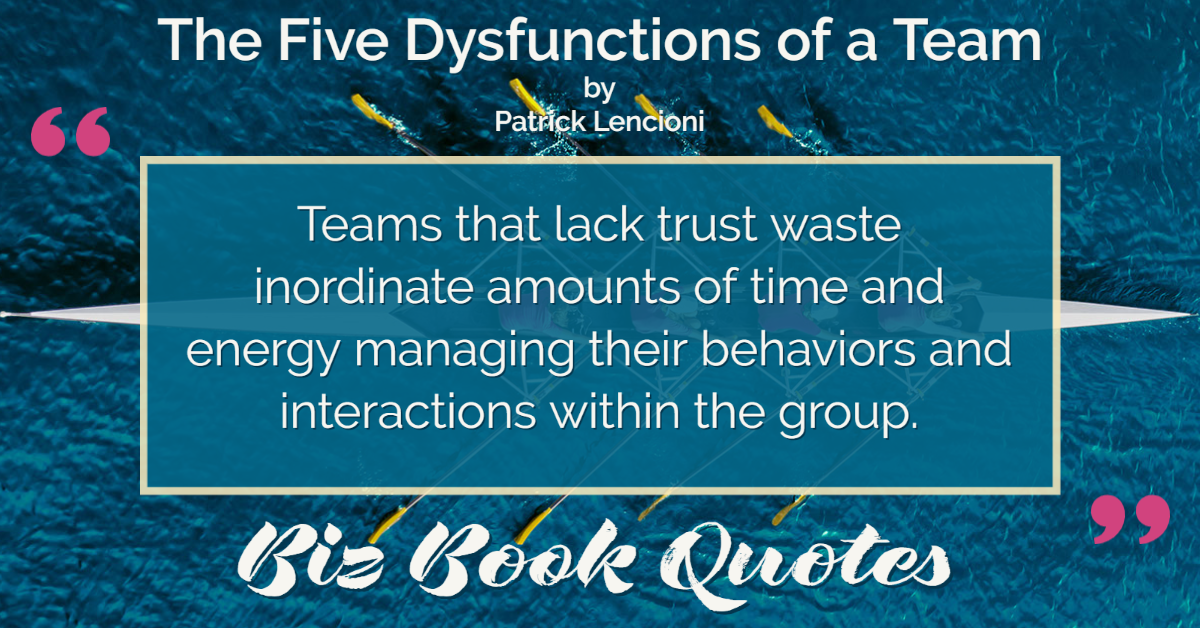
|
The Five Dysfunctions of a Team:
Teams that lack trust waste inordinate amounts of time and energy managing their behaviors and interactions within the group.
|
196 |
|
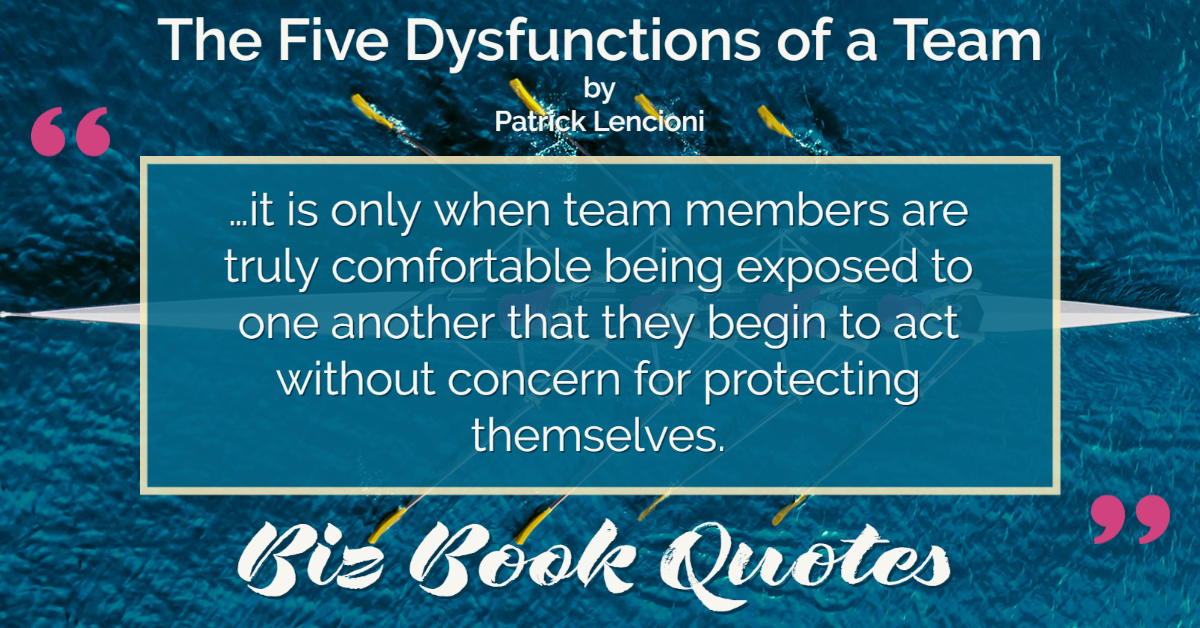
|
The Five Dysfunctions of a Team:
…it is only when team members are truly comfortable being exposed to one another that they begin to act without concern for protecting themselves.
|
196 |
|
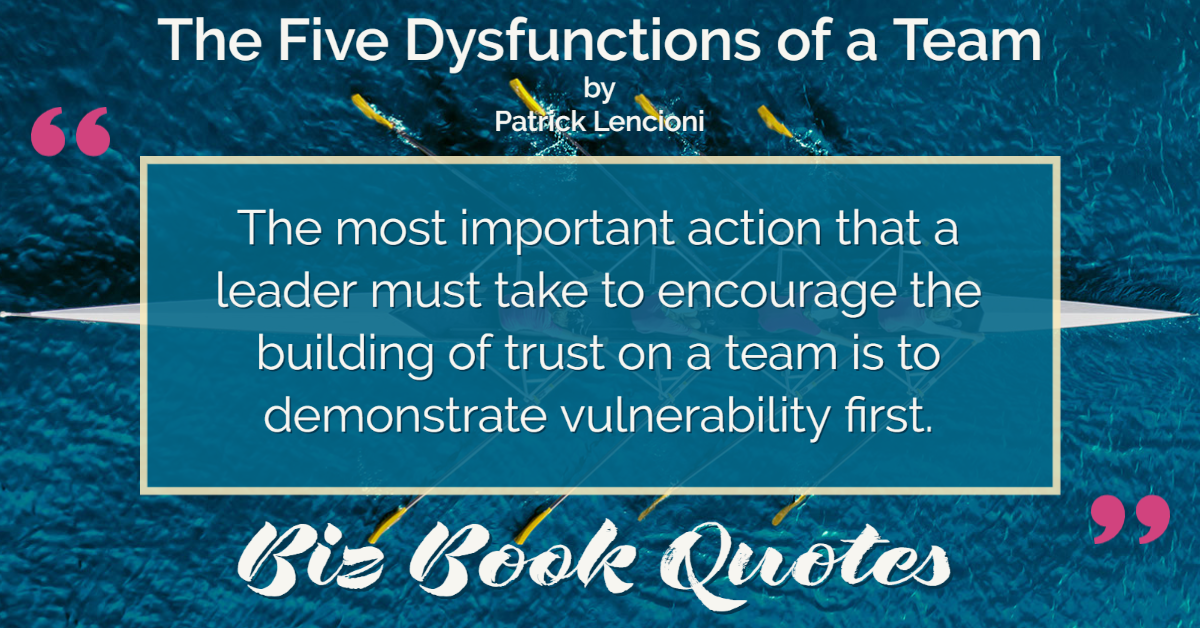
|
The Five Dysfunctions of a Team:
The most important action that a leader must take to encourage the building of trust on a team is to demonstrate vulnerability first.
|
201 |
|
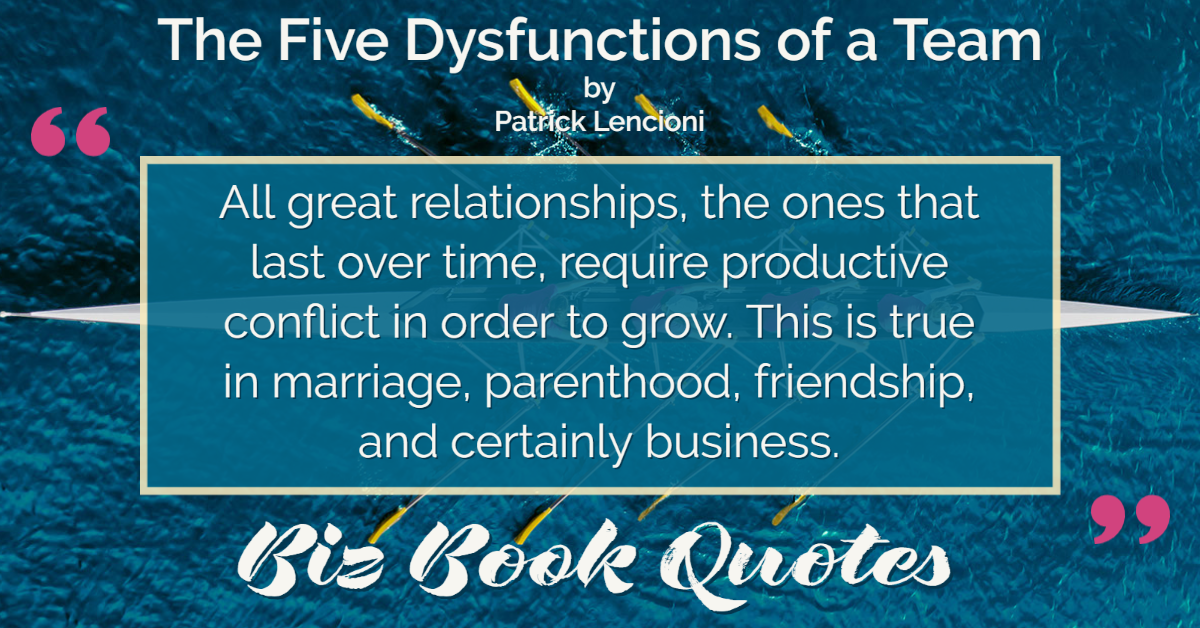
|
The Five Dysfunctions of a Team:
All great relationships, the ones that last over time, require productive conflict in order to grow. This is true in marriage, parenthood, friendship, and certainly business.
|
202 |
|
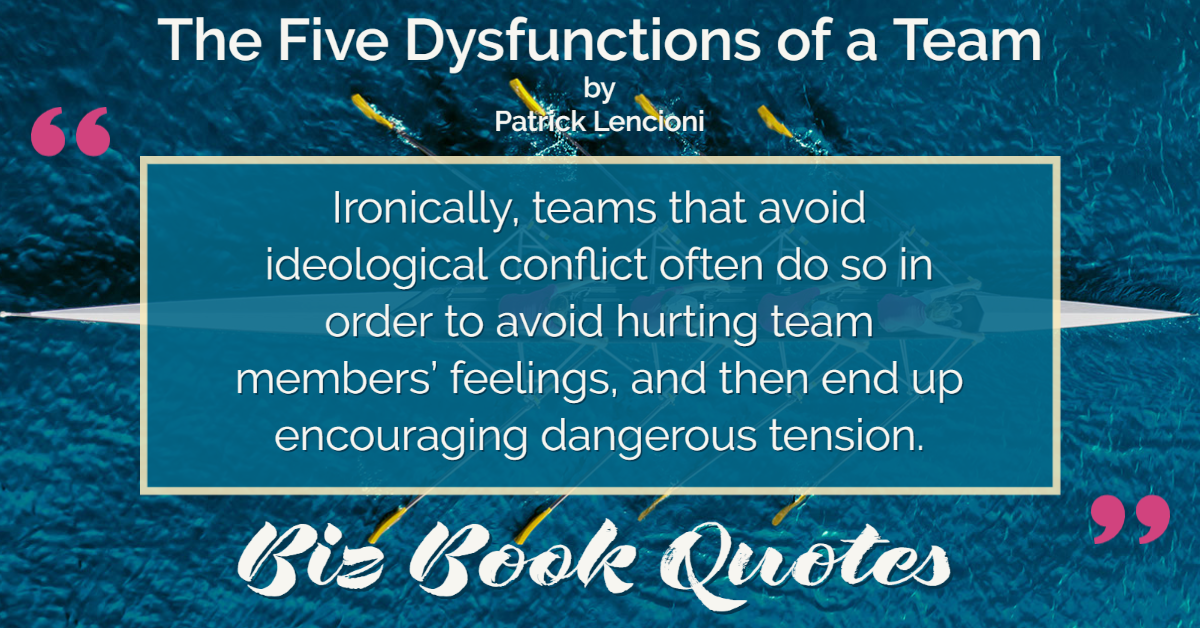
|
The Five Dysfunctions of a Team:
Ironically, teams that avoid ideological conflict often do so in order to avoid hurting team members’ feelings, and then end up encouraging dangerous tension.
|
203 |
|
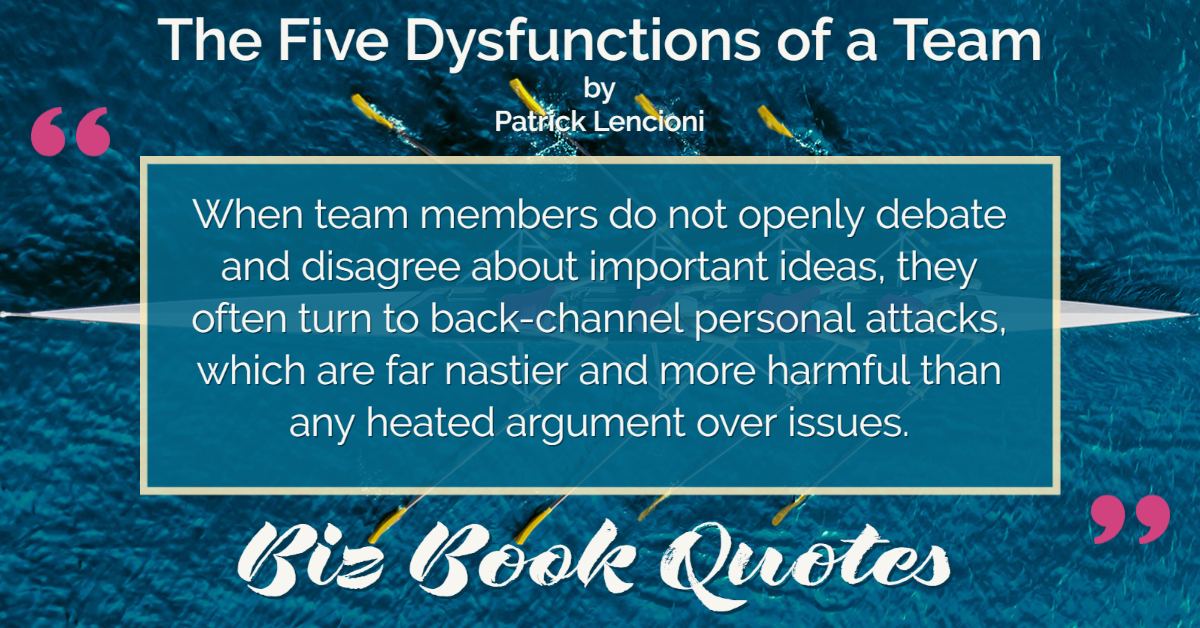
|
The Five Dysfunctions of a Team:
When team members do not openly debate and disagree about important ideas, they often turn to back-channel personal attacks, which are far nastier and more harmful than any heated argument over issues.
|
203 |
|
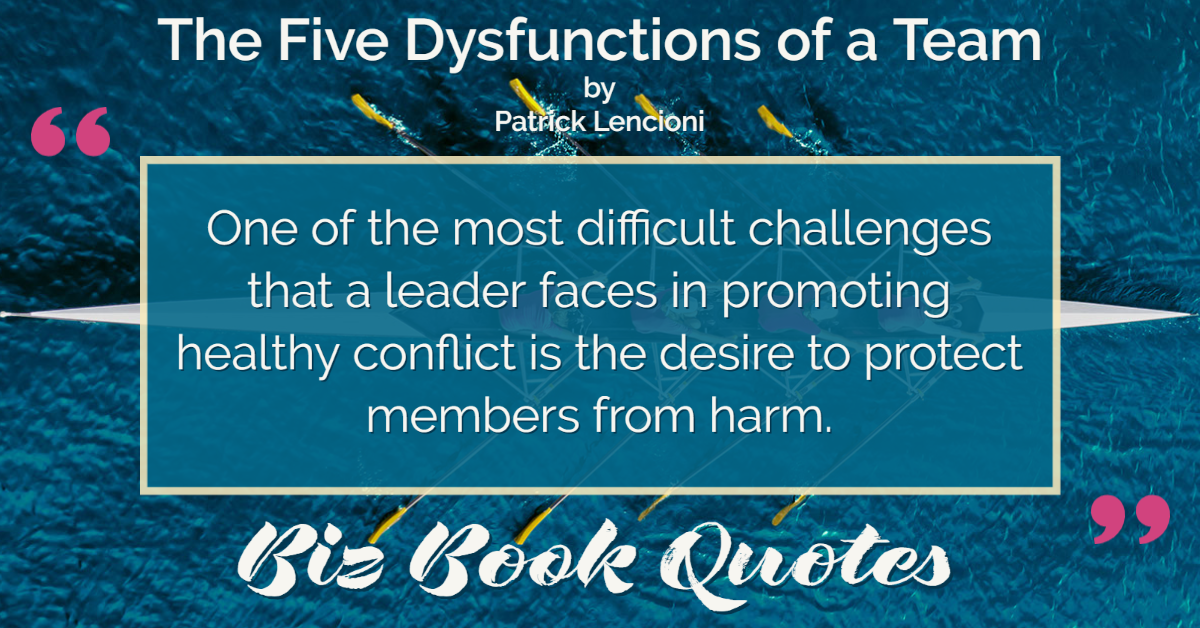
|
The Five Dysfunctions of a Team:
One of the most difficult challenges that a leader faces in promoting healthy conflict is the desire to protect members from harm.
|
206 |
|
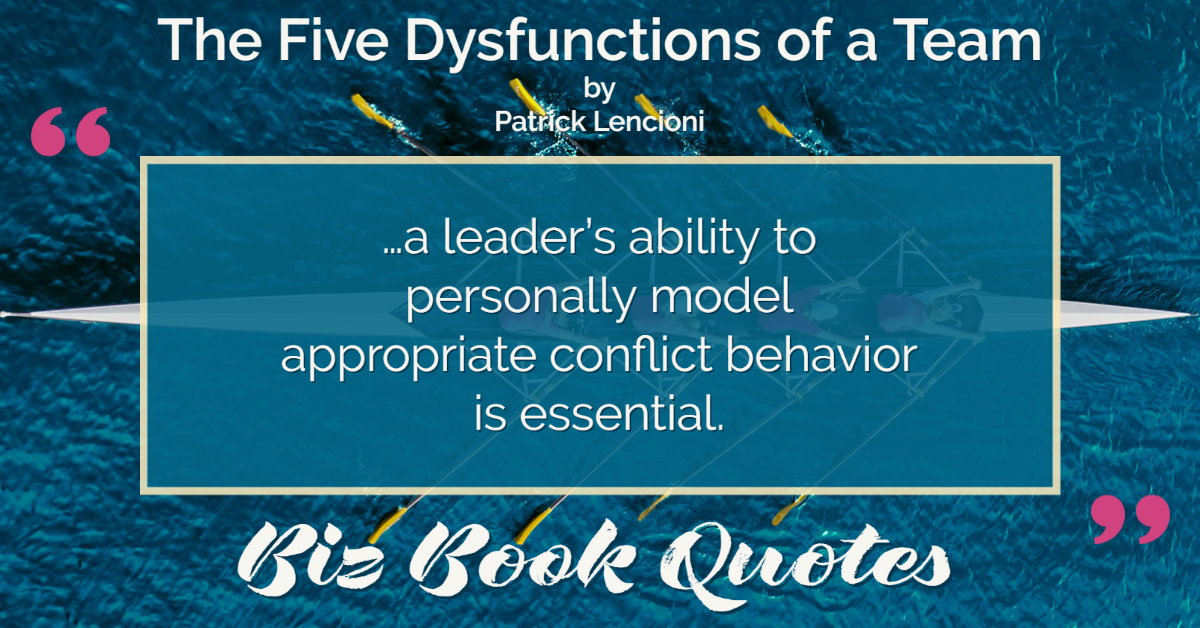
|
The Five Dysfunctions of a Team:
…a leader’s ability to personally model appropriate conflict behavior is essential.
|
206 |
|
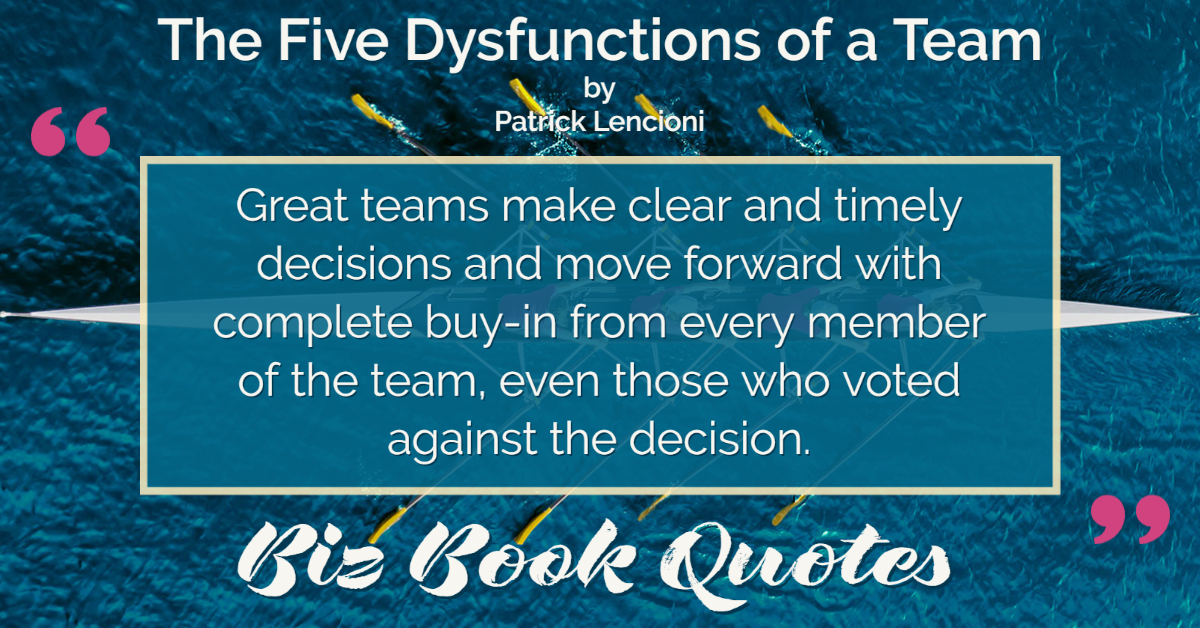
|
The Five Dysfunctions of a Team:
Great teams make clear and timely decisions and move forward with complete buy-in from every member of the team, even those who voted against the decision.
|
207 |
